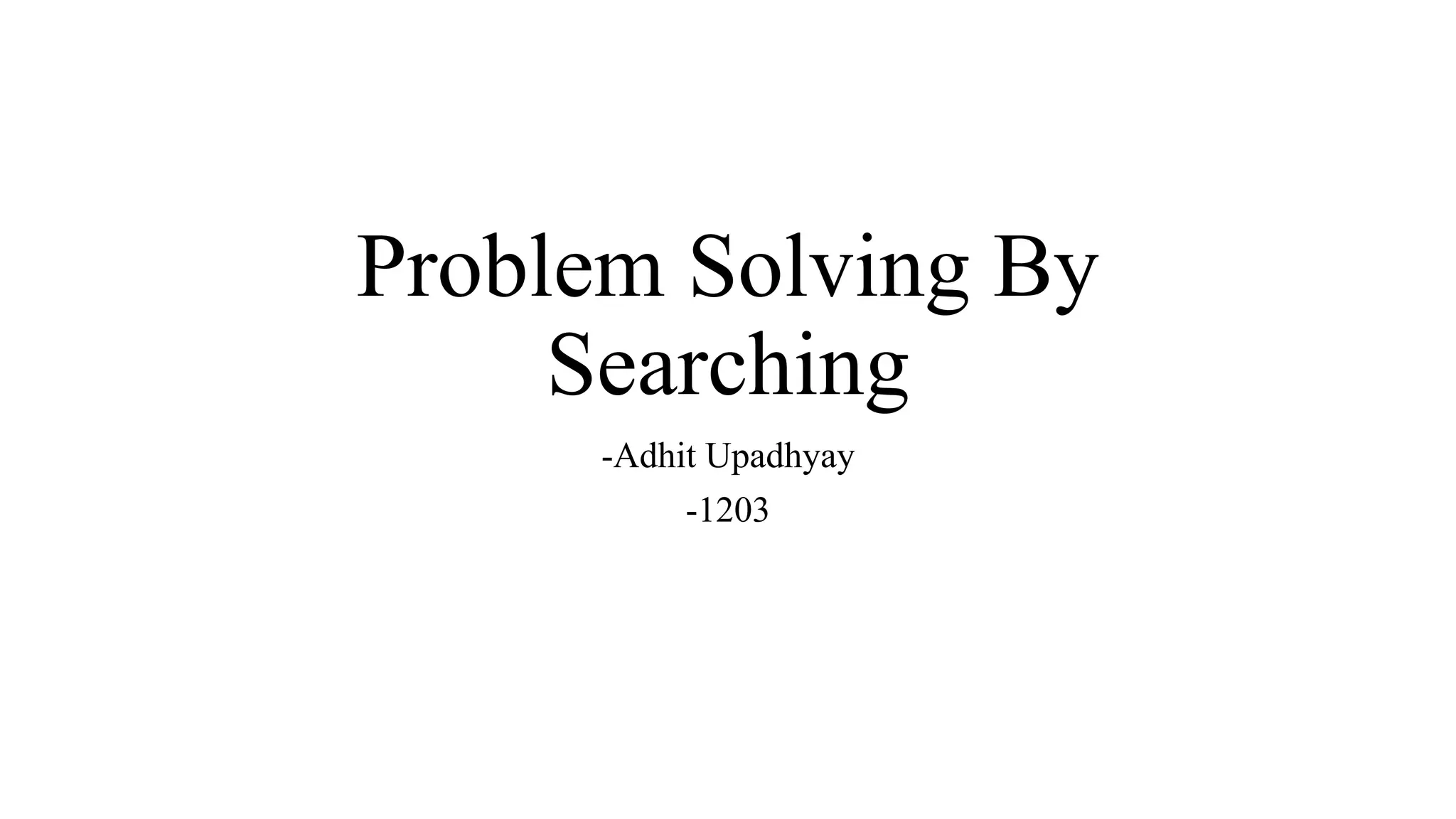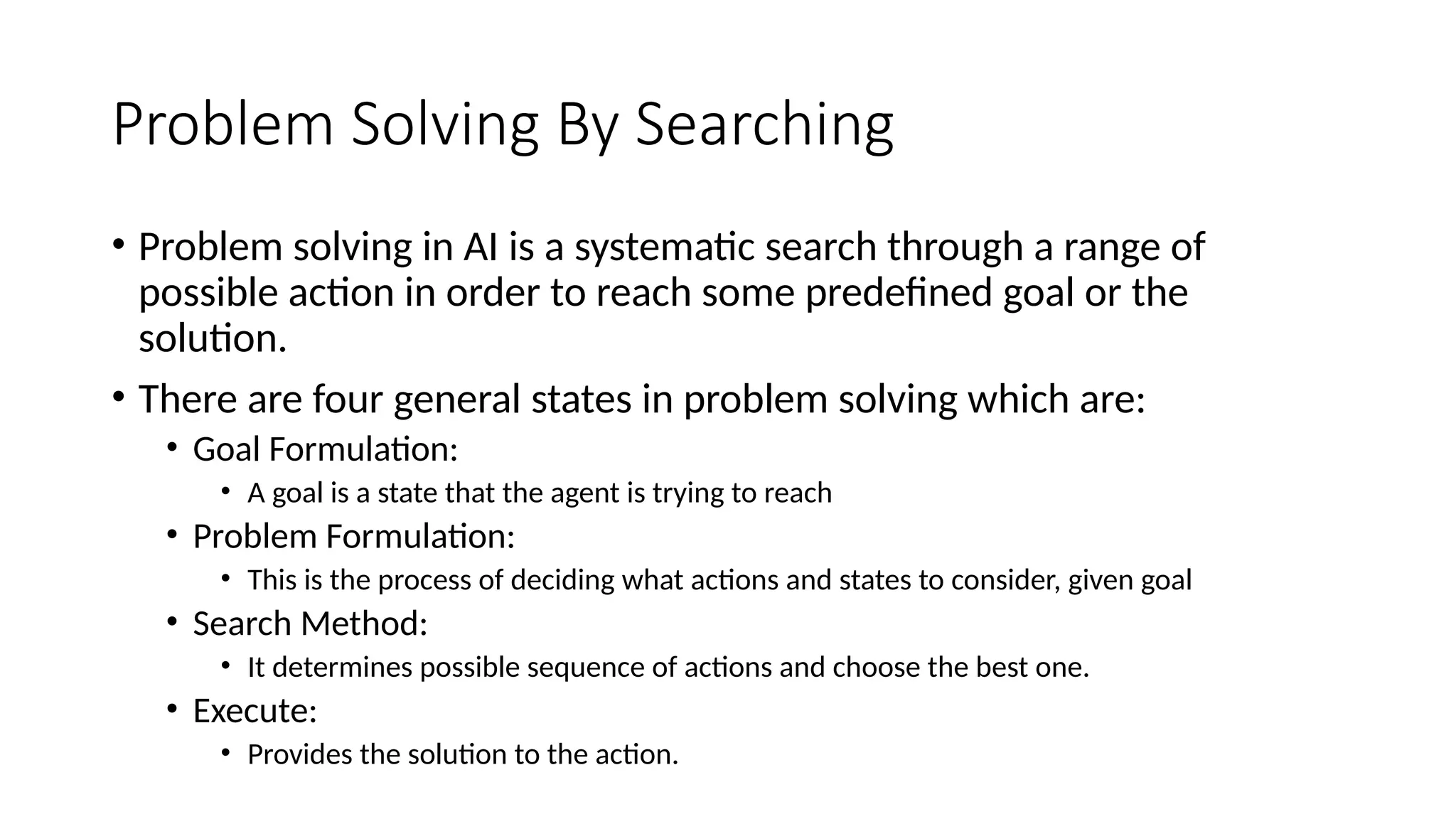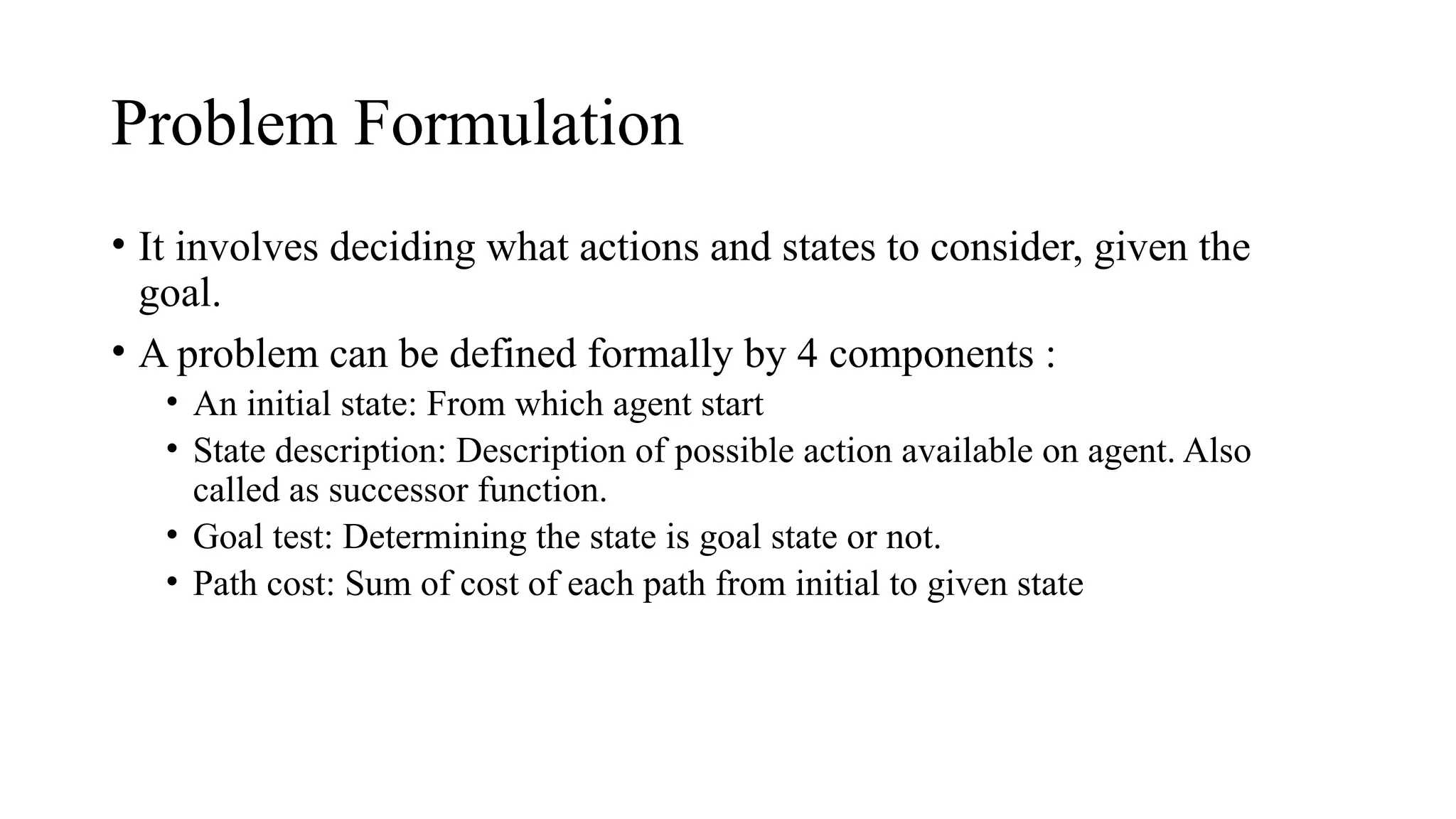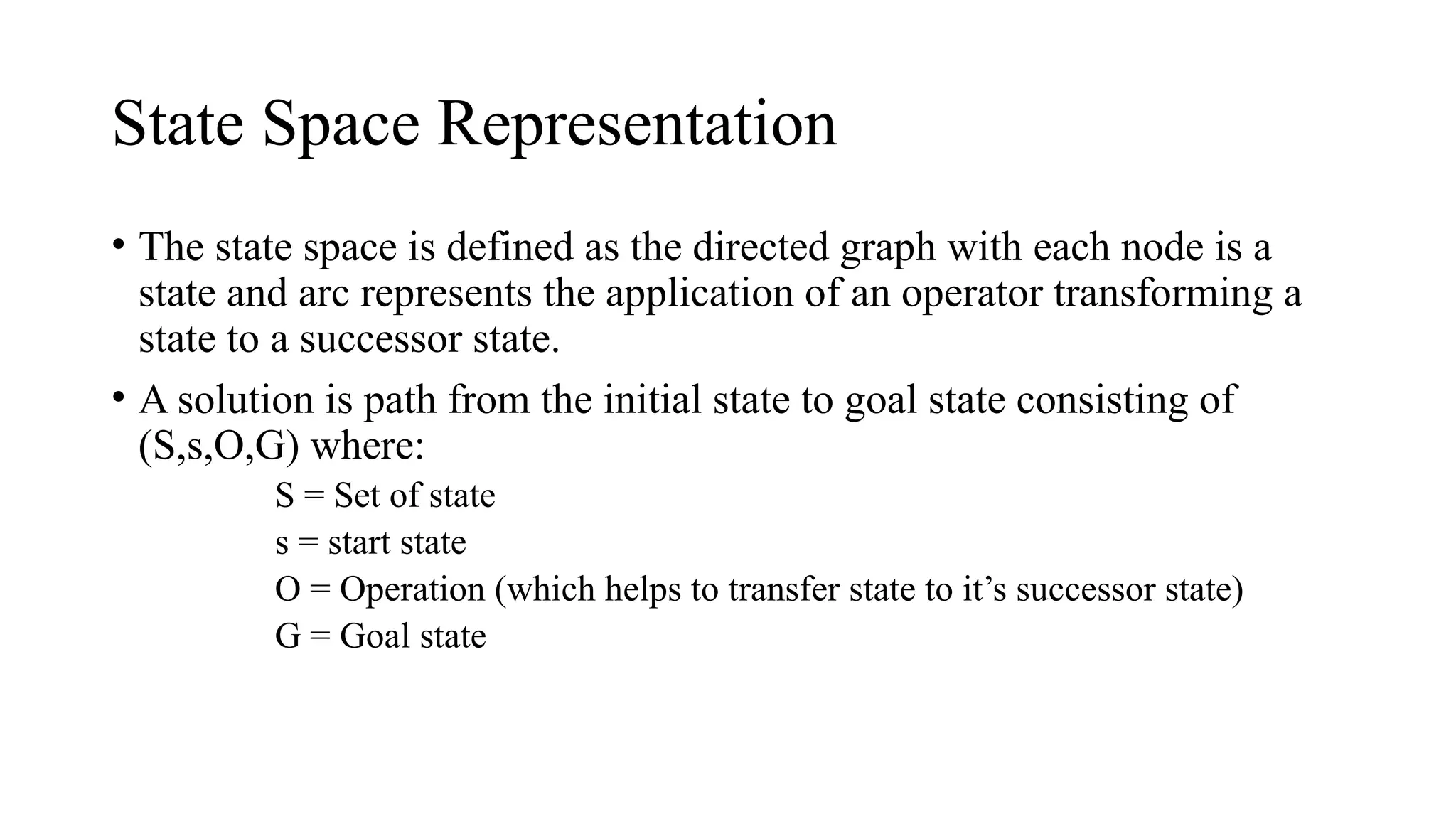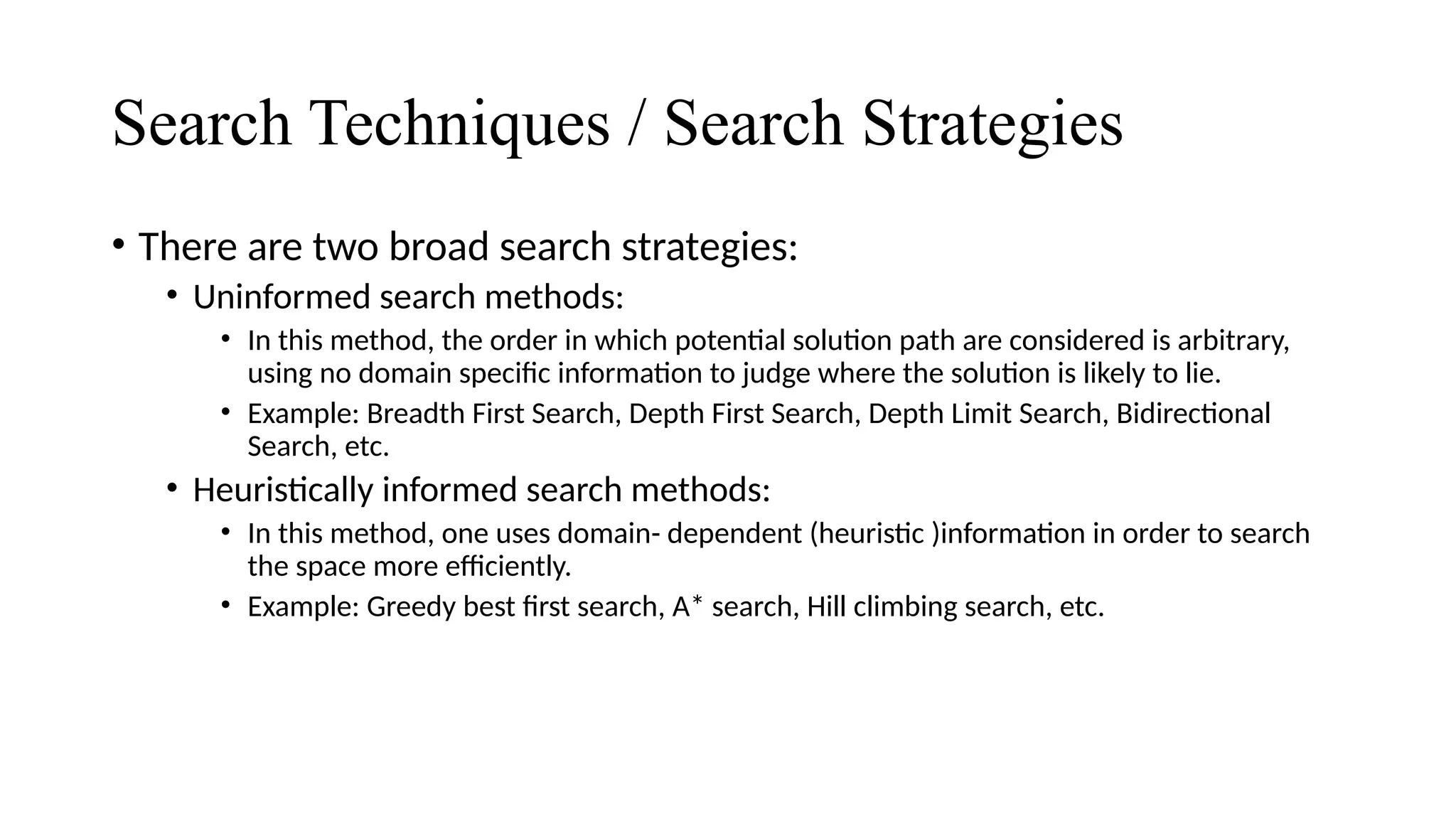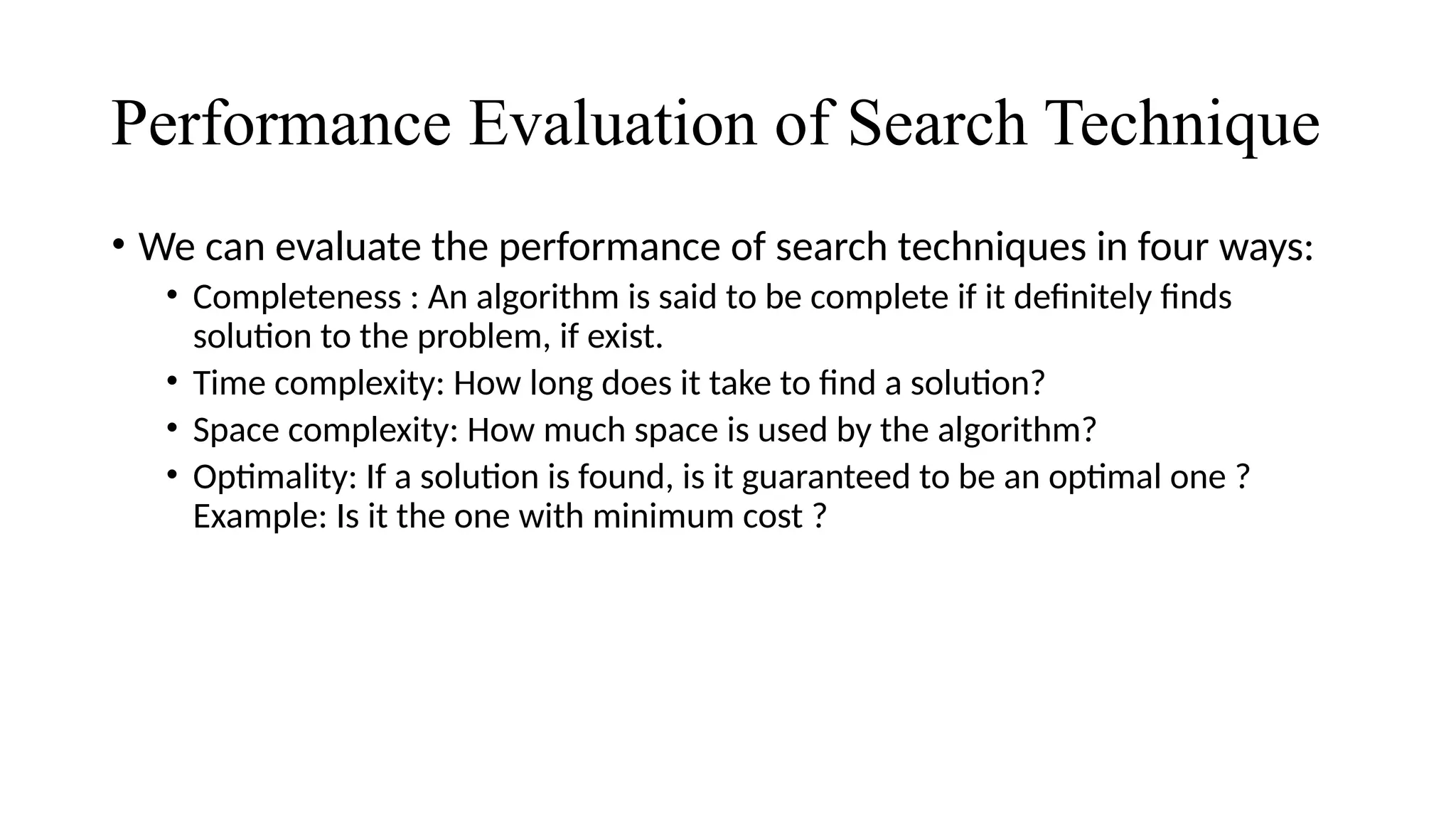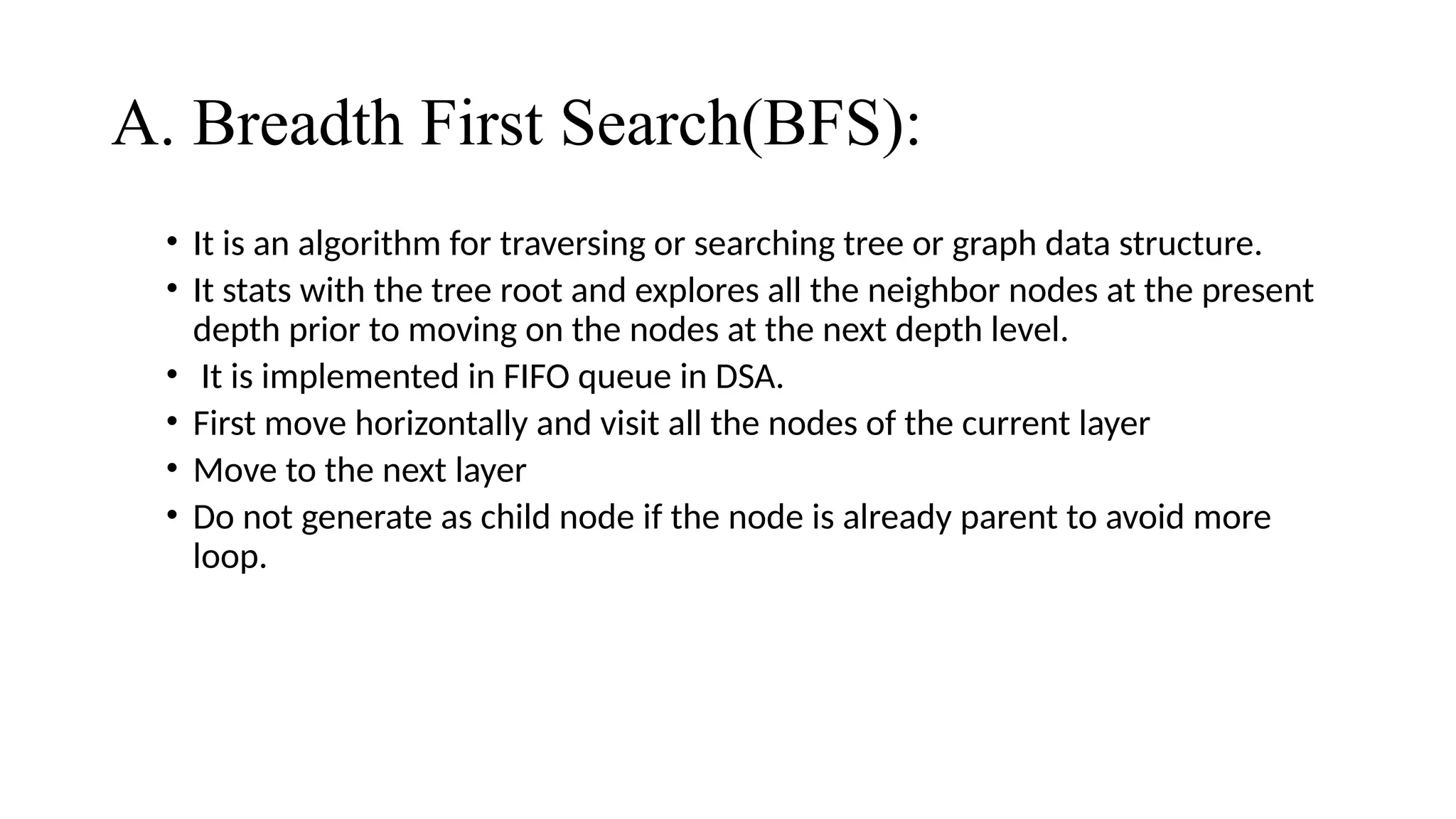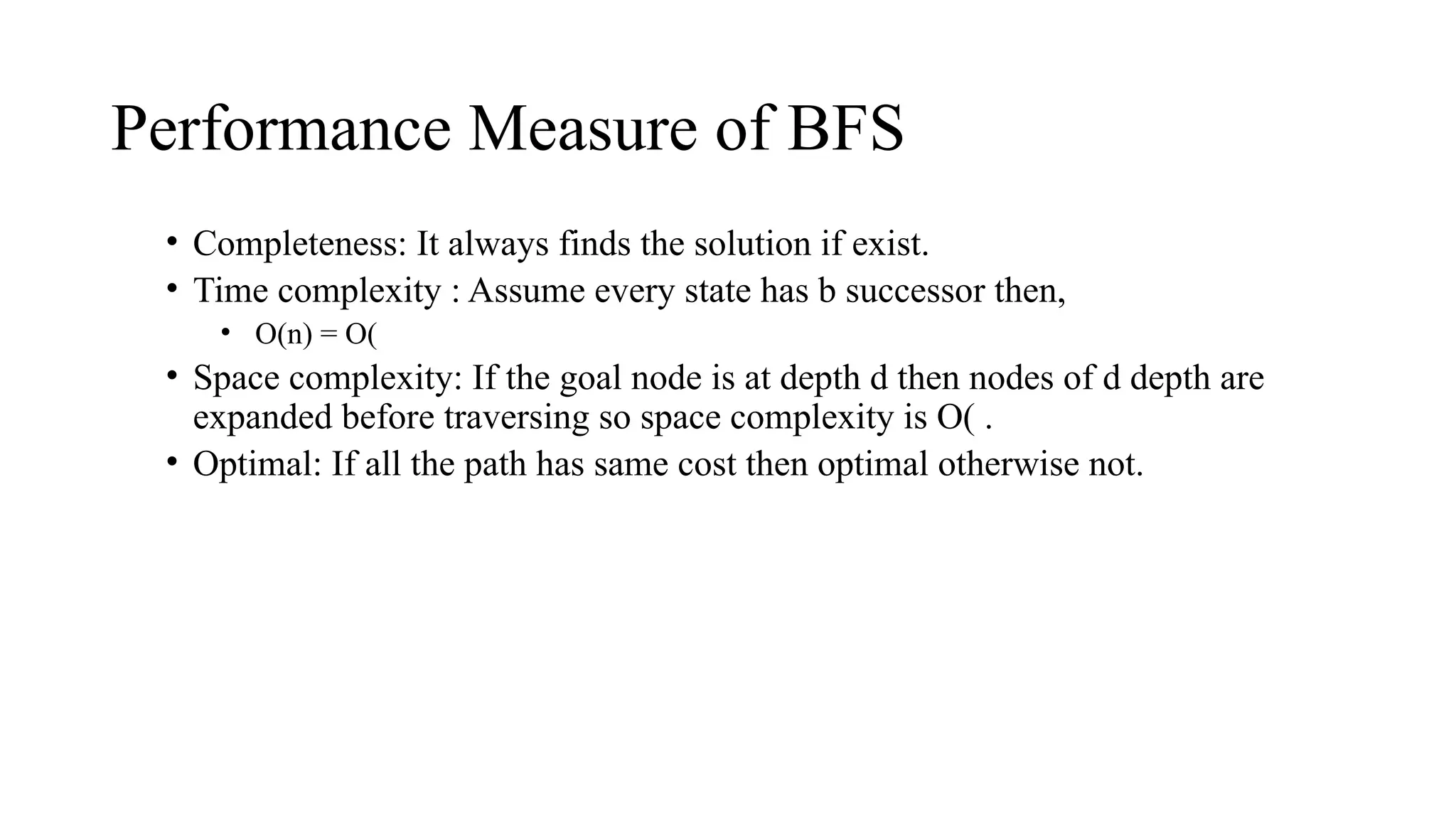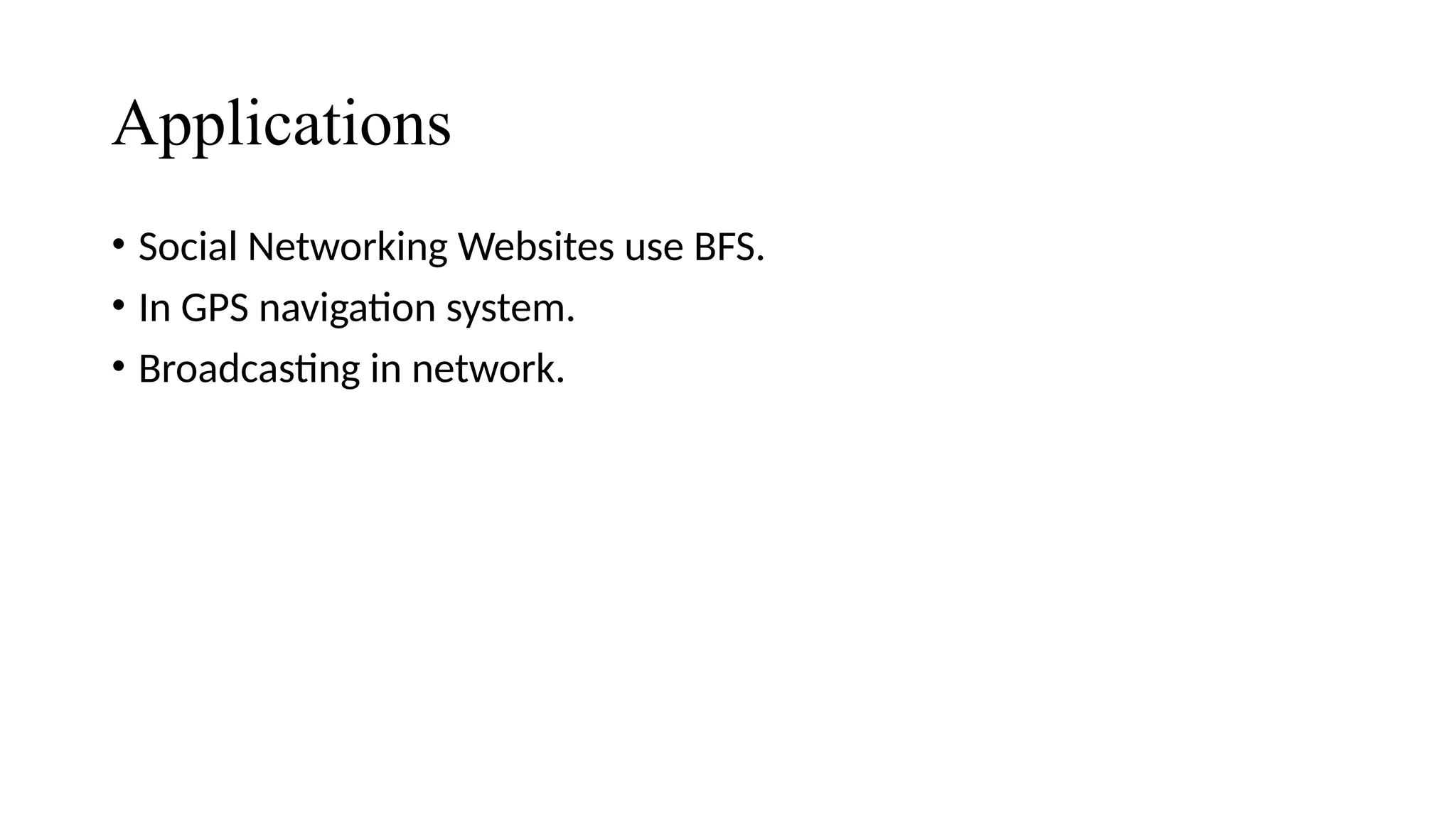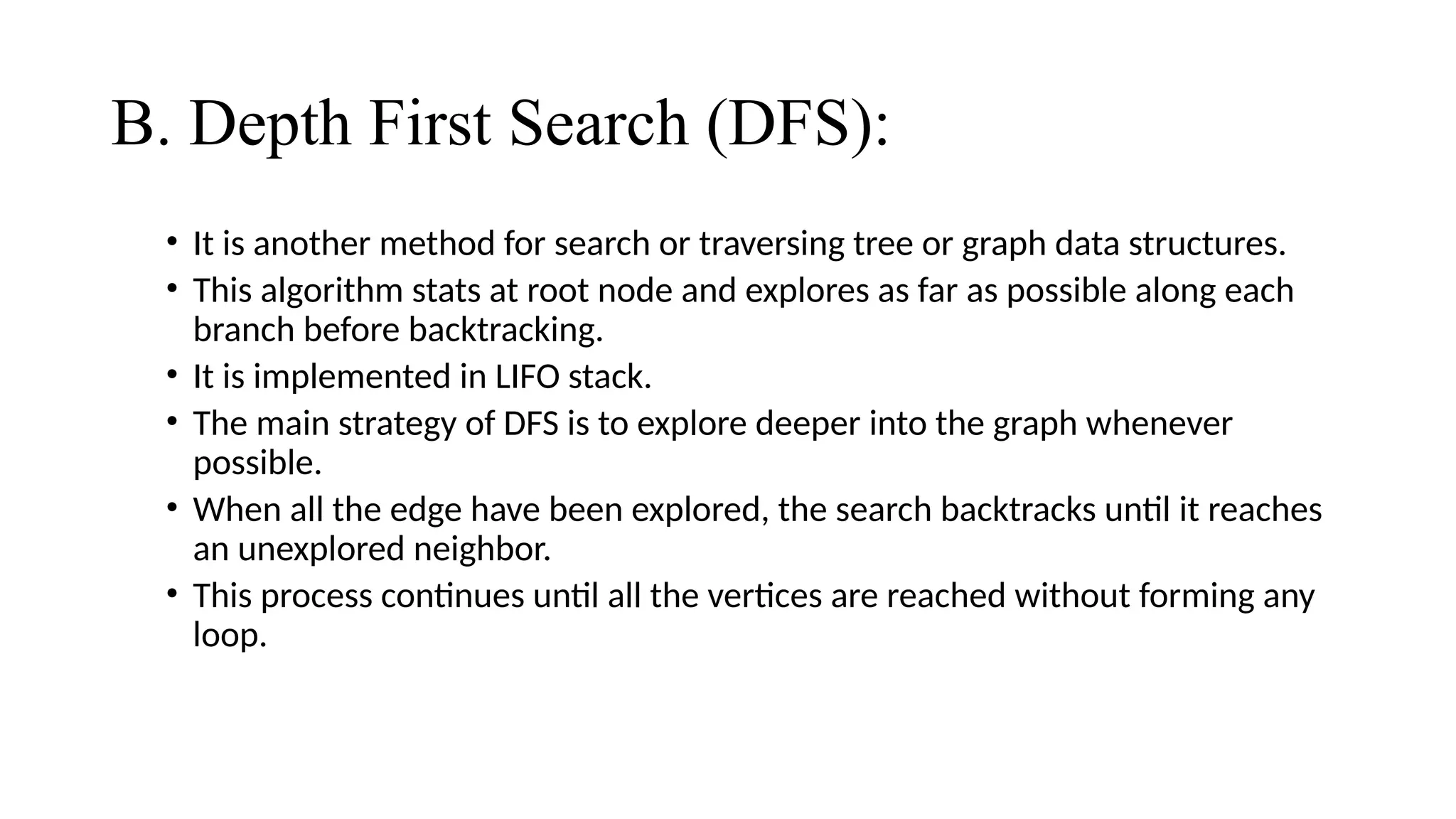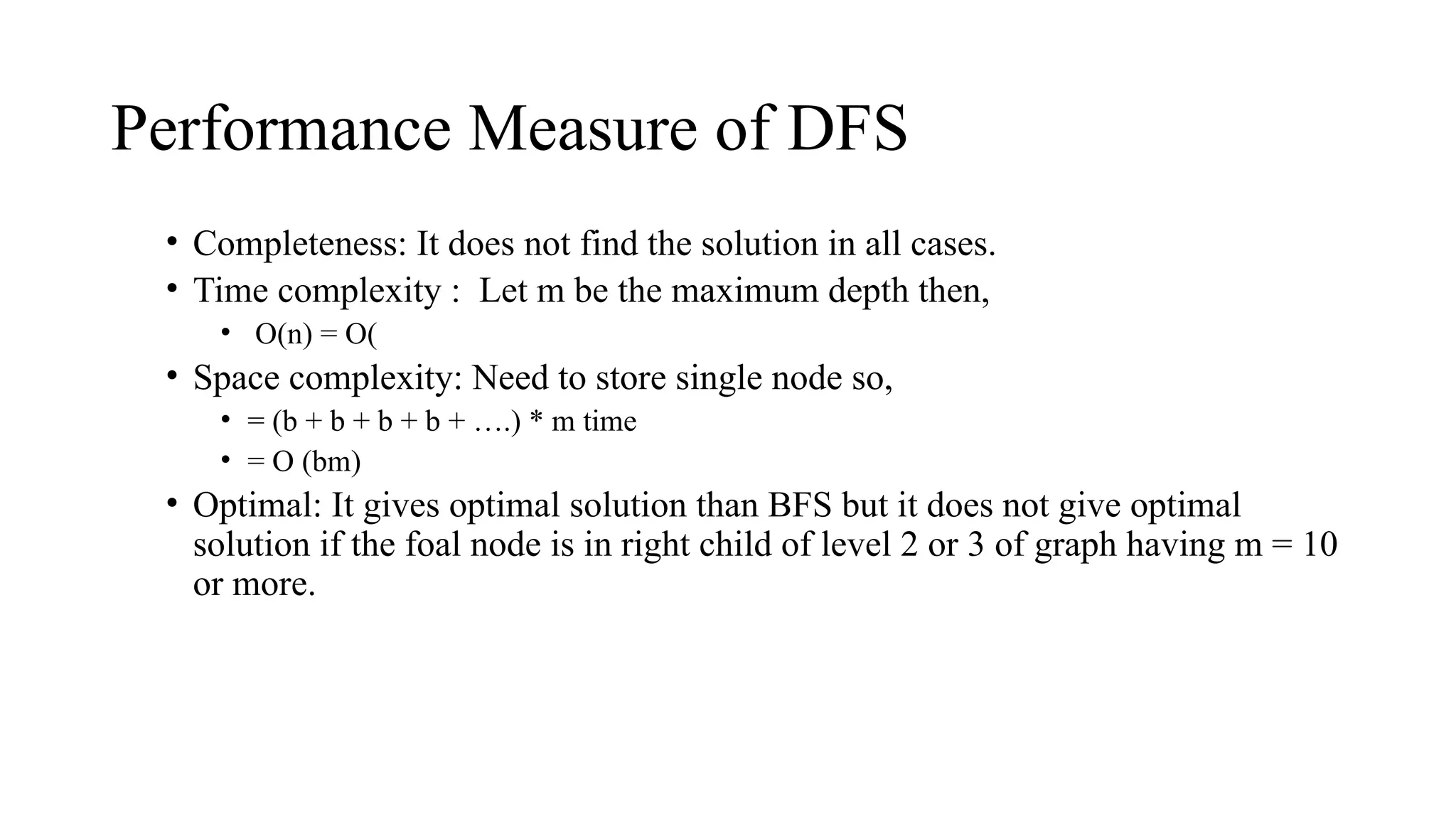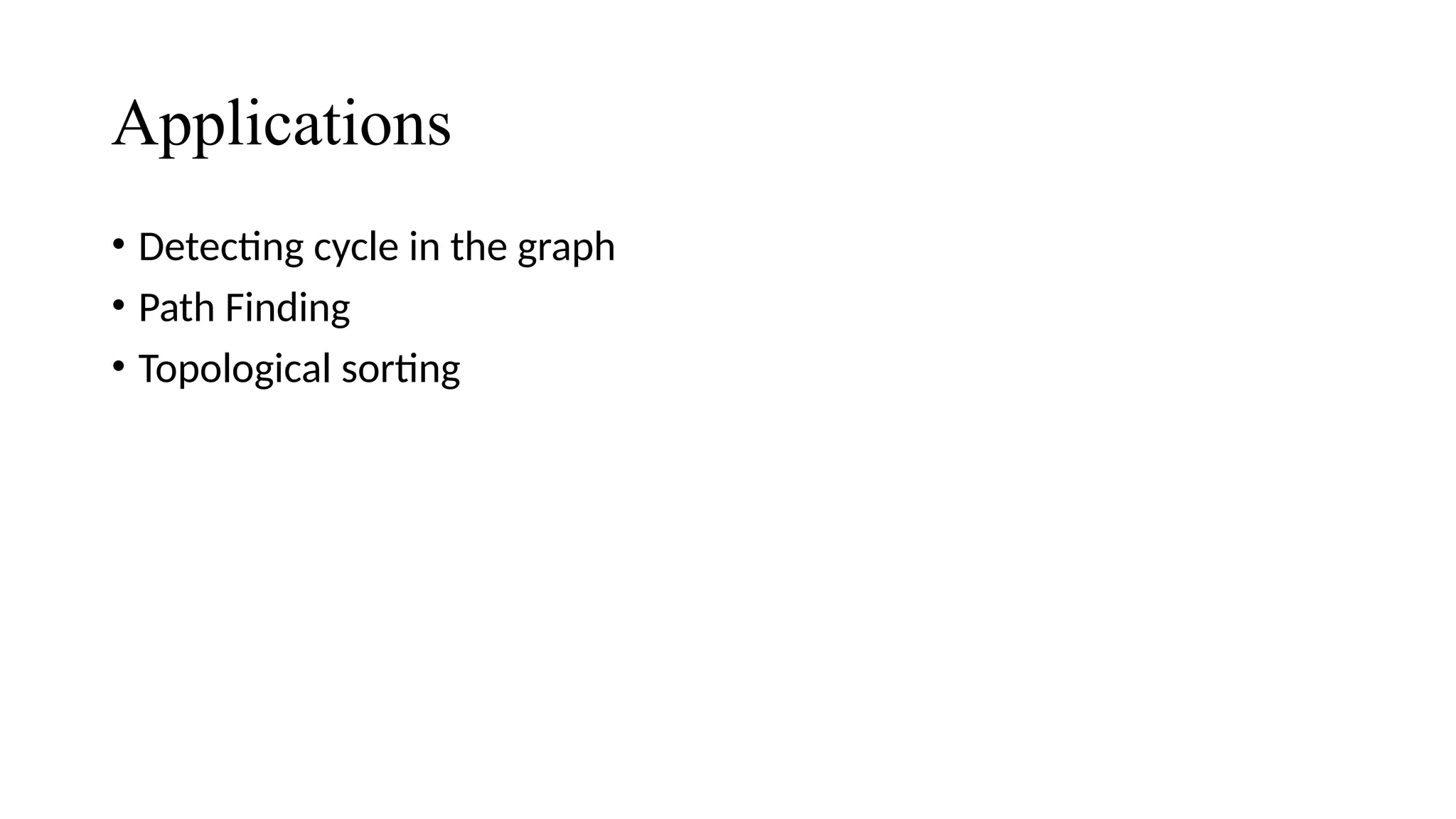The document discusses problem solving in artificial intelligence through systematic searches to reach predefined goals, highlighting components like goal formulation, problem formulation, search methods, and execution. It outlines two primary search strategies: uninformed and heuristically informed search methods, along with performance evaluation criteria such as completeness, time complexity, space complexity, and optimality. Additionally, it describes algorithms like breadth-first search (BFS) and depth-first search (DFS), their performance measures, and applications in various fields.
